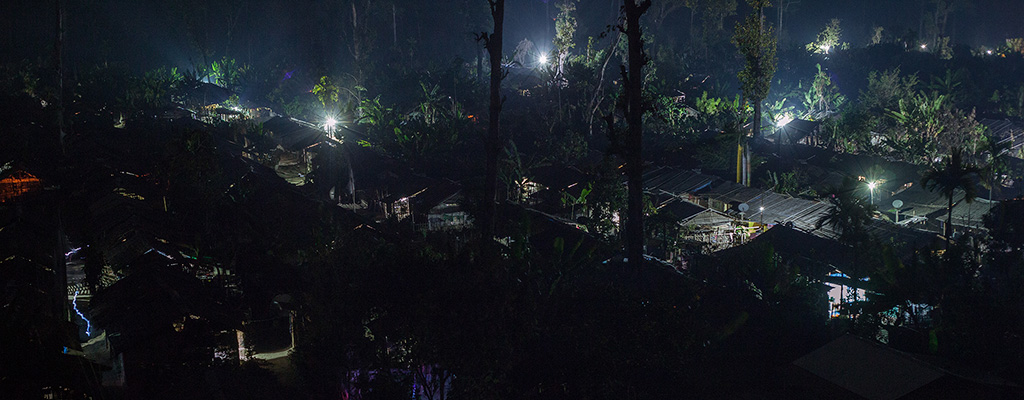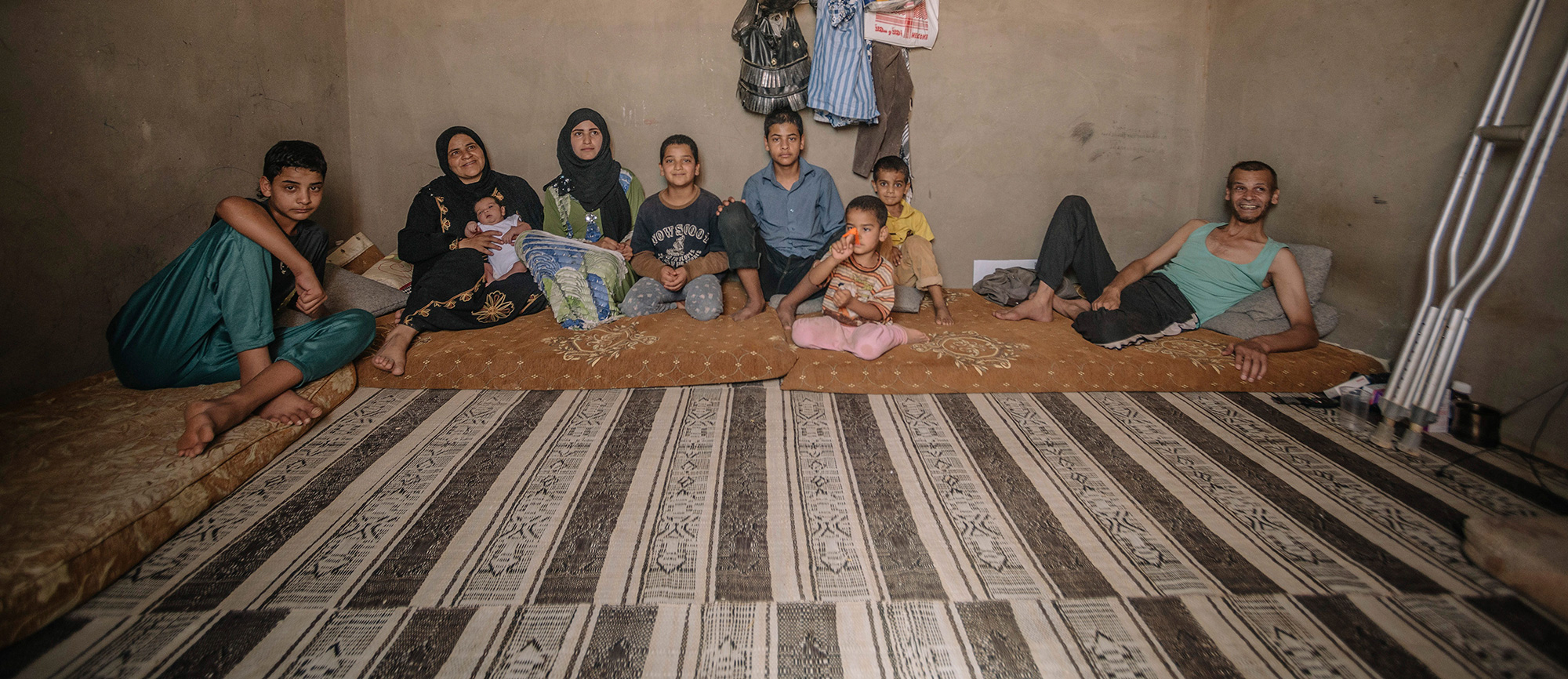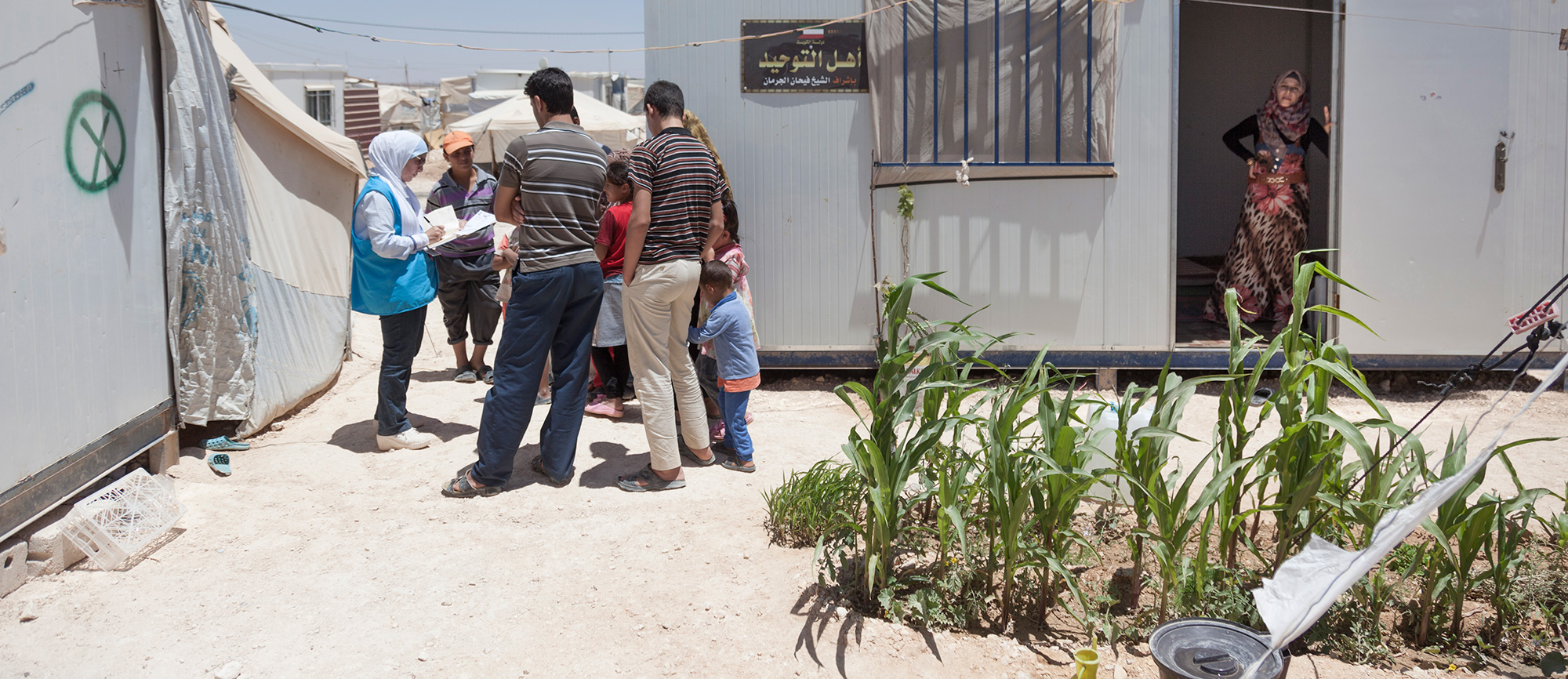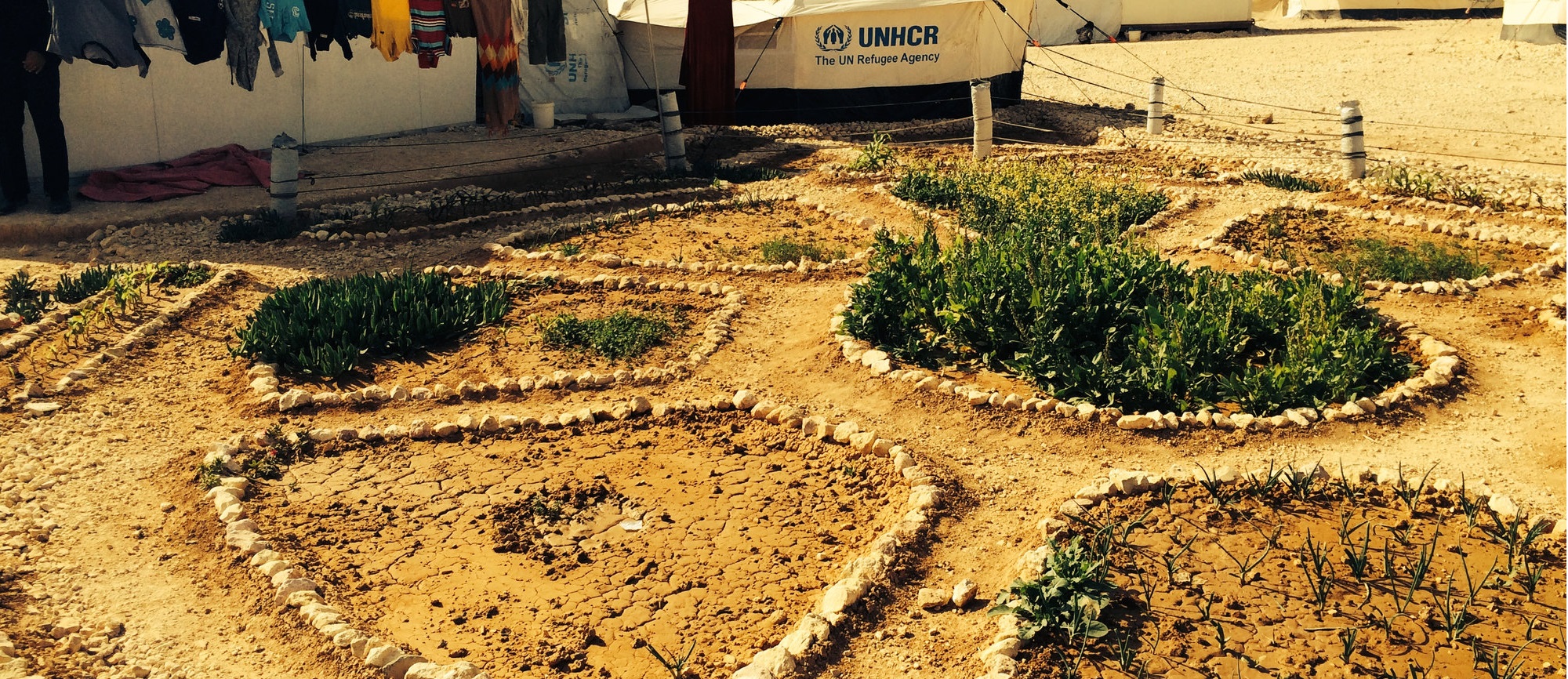1. Define challenges
Addressing energy and fuel poverty
In 2014, UNHCR Nepal embarked on a collaborative process along with the Innovation and Energy units to design a new energy strategy for the Beldangi and Sanischare refugee camps. With the refugee population rapidly decreasing due to the ongoing resettlement process, it had become crucial to come up with a new strategy that would address the energy needs of the remaining refugees as well as the surrounding host community. Engineers Without Borders USA came on board as project partner. The Ikea Foundation later committed to bring financial backing to the initiative.
An assessment of access to energy in the camps revealed a need for better street lighting, which residents said would increase their feelings of safety. The team also identified an opportunity to increase access to more sustainable and cheaper sources of energy at the household level, so as to decrease the use of , kerosene candles and firewood.
2. Identify solutions
Designing a sustainable, refugee-driven energy system
Previous solar streetlights installed by UNHCR Nepal hadn’t been maintained properly, leaving the system susceptible to rapid malfunction. The new design would therefore have to be more durable and embraced by the community as to ensure proper maintenance.
Through a constant dialogue between UNHCR, EWB USA and refugee and host community groups, the Innovation unit designed a pilot for a mini-grid solar system to power street lights. Contrary to other grid-based systems, the mini-grid would keep on working even if some of the streetlights went down. Eventually, the surplus electricity generated could be sold to nearby households who would wish to be connected to the grid.
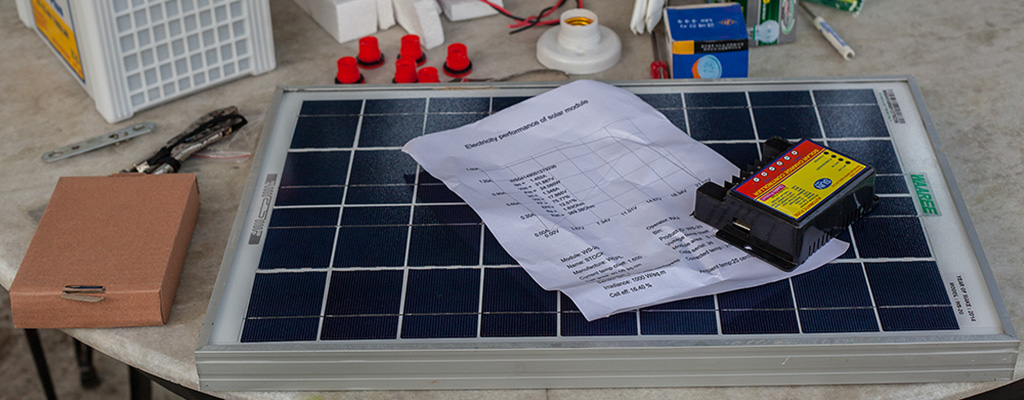
3. Test solutions
Changing community needs
In the summer of 2015, the pilot project was installed. Then in the fall, a number of technicians from the camp as well as refugees were trained in the ongoing maintenance of the system. UNHCR and EWB USA had made sure to simplify the design of the grid and lights by making it easy to clean and maintain; this would ensure that refugees could manage the system themselves, and then pass it on to the host community once the resettlement process comes to an end. UNHCR and EWB USA remained in constant communication with refugee and host communities to gather feedback and to ensure their buy-in.
After a few months, some defects were revealed in the system’s design – many of the LED lights were faulty and needed to be replaced. The pilot also struggled to generate ownership from the community, as many refugees knew they would soon be leaving the country through the resettlement program, and didn’t see the value of investing time in maintaining the lights. Lastly, the need to connect individual households to the mini-grid didn’t appear as acute as it first was during the initial assessment, as the penetration of solar-powered batteries at the individual household level seemed to be increasing. This would likely impact the project’s expansion.

4. Refine solutions
Getting the system ready for expansion
UNHCR proceeded to adjust the design of the mini-grids and replace all of the LED lights to improve their quality. The team also decreased the number of lights supported by each mini-grid in order to reduce the demand on the batteries, thus making the grids more durable. Moving forward, UNHCR and EWB USA decided not to pursue the connection of household to the mini-grid, but rather focus on expanding the mini-grid pilot throughout the camps. The second phase of the project should allow the total number of lights to double. Installation of the additional mini-grids will take place throughout 2016, with a total of 110 streetlights planned.
To address the issue of community mobilisation, UNHCR opted for training energy ambassadors selected from the refugee and host communities. These volunteers will be provided intensive training on mini-grid installations, and will be tasked with maintaining the mini-grids and streetlights. By installing mini-grids in host communities as well as in the camps, UNHCR hopes to ensure the sustainability of the project beyond the resettlement process.
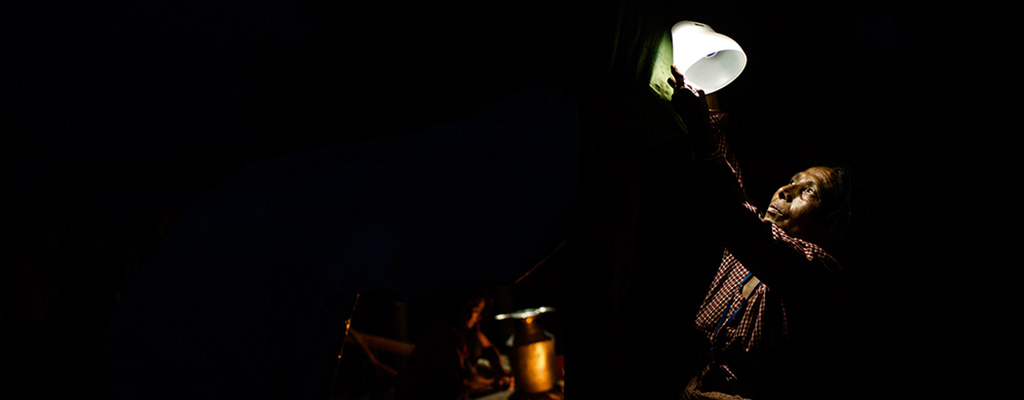
5. Scale solutions
Making sure a successful pilot can go to scale
A key part of the project was to secure future resources and funding from the UNHCR operation in Nepal, should the pilot prove successful and scalable. This long-term strategy meant the country operation had to plan its resources accordingly, without knowing whether the project would work out or fail – a significant departure from usual project management strategies.
The mini-grid system has since been incorporated in the national level Safe Access to Fuel and Energy strategy for the Nepal country operation, ensuring the pilot project can successfully and quickly go to scale if need be.
UNHCR Innovation is now looking at the possibility of replicating the mini-grid system in other operations around the world – a project is already ongoing in Ethiopia’s Dollo Ado refugee camp. However the Nepal project is comprised of many culturally sensitive elements that may be unique to the region. For instance, the adoption rate for communal lighting may be higher in South Asia, and the type of parts and batteries used in Nepal may not be found elsewhere. UNHCR and its project partners will need to keep this in mind when implementing mini-grids in different locations.






